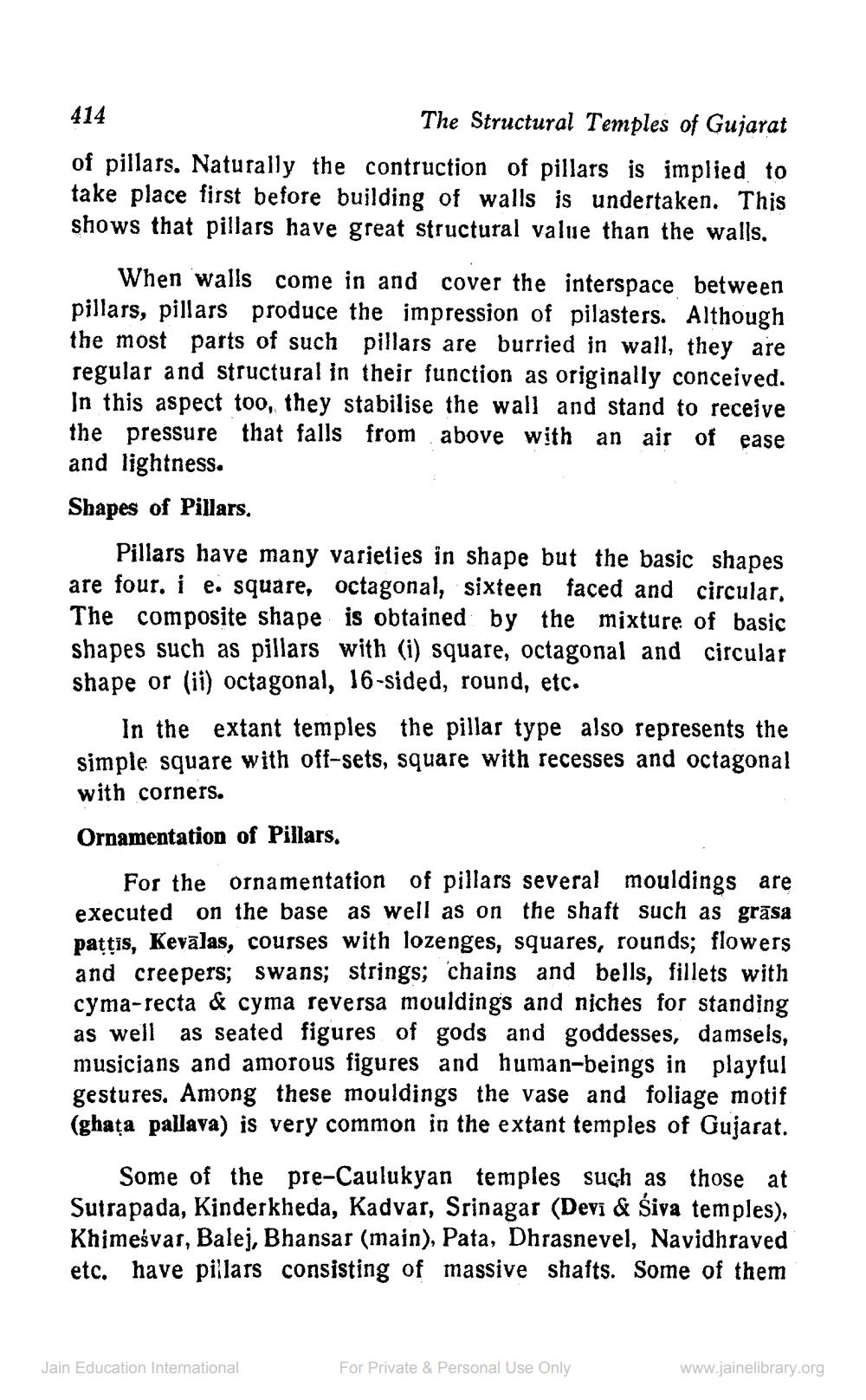________________
414
The Structural Temples of Gujarat of pillars. Naturally the contruction of pillars is implied to take place first before building of walls is undertaken. This shows that pillars have great structural value than the walls.
When walls come in and cover the interspace between pillars, pillars produce the impression of pilasters. Although the most parts of such pillars are burried in wall, they are regular and structural in their function as originally conceived. In this aspect too, they stabilise the wall and stand to receive the pressure that falls from above with an air of ease and lightness. Shapes of Pillars.
Pillars have many varieties in shape but the basic shapes are four. i e. square, octagonal, sixteen faced and circular. The composite shape is obtained by the mixture of basic shapes such as pillars with (i) square, octagonal and circular shape or (ii) octagonal, 16-sided, round, etc.
In the extant temples the pillar type also represents the simple square with off-sets, square with recesses and octagonal with corners. Ornamentation of Pillars.
For the ornamentation of pillars several mouldings are executed on the base as well as on the shaft such as grasa pattīs, Kevālas, courses with lozenges, squares, rounds; flowers and creepers; swans; strings; chains and bells, fillets with cyma-recta & cyma reversa mouldings and niches for standing as well as seated figures of gods and goddesses, damsels, musicians and amorous figures and human-beings in playful gestures. Among these mouldings the vase and foliage motif (ghața pallava) is very common in the extant temples of Gujarat.
Some of the pre-Caulukyan temples such as those at Sutrapada, Kinderkheda, Kadvar, Srinagar (Devi & Śiva temples), Khimeśvar, Balej, Bhansar (main), Pata, Dhrasnevel, Navidhraved etc. have pillars consisting of massive shafts. Some of them
Jain Education International
For Private & Personal Use Only
www.jainelibrary.org




